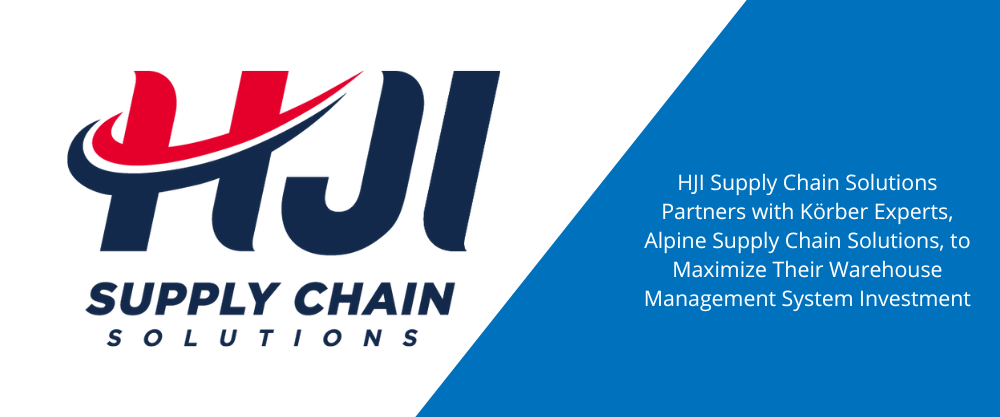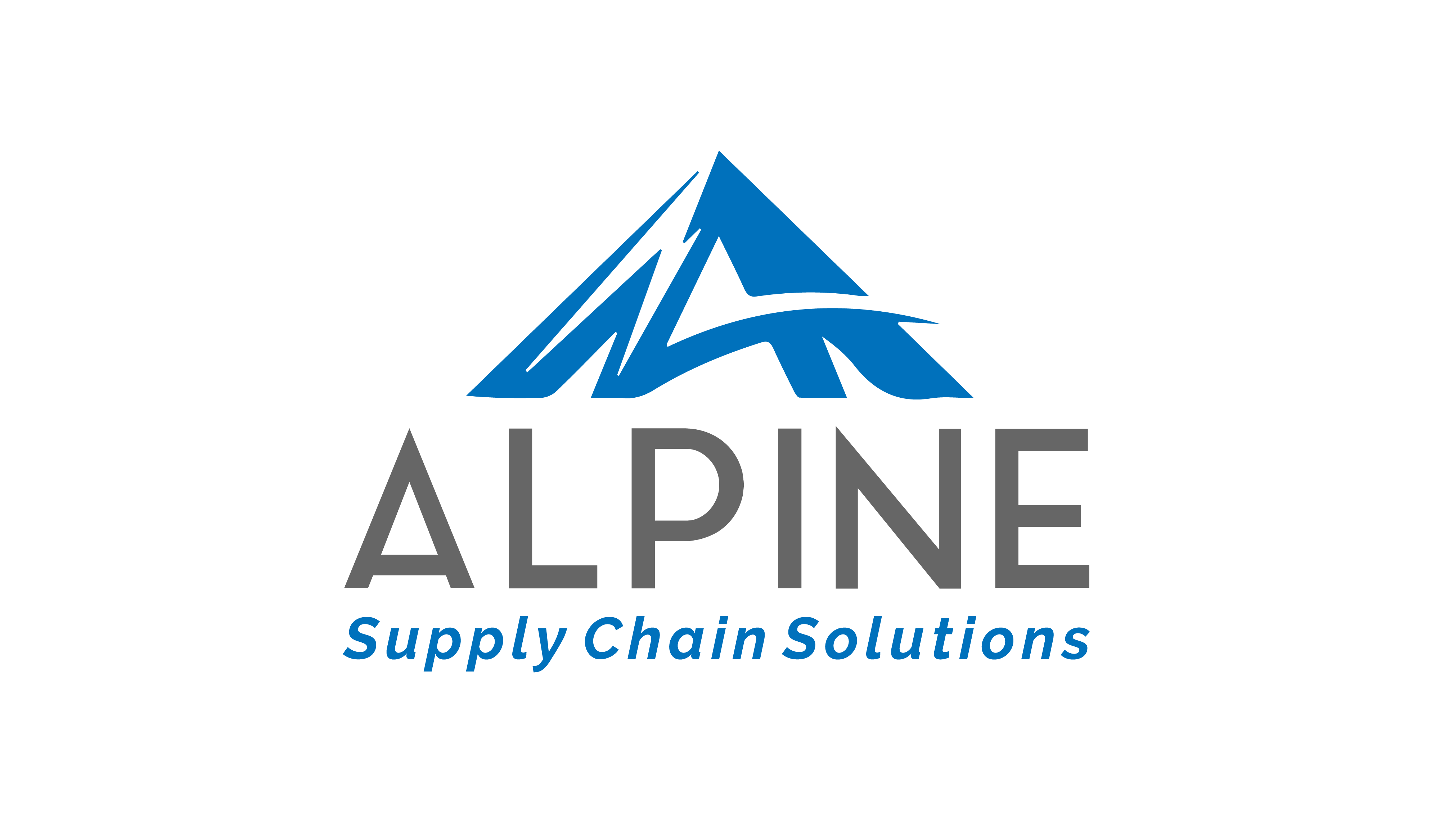
by Noelle Abarelli | Jul 21, 2022 | Alpine News Blog, Blog
You’ve been given the monumental task of finding a new WMS, and you need it fast, but where do you begin? The first thing to do is slow down! WMS selection is not a process you can rush, it requires research, planning, and a whole lot of thought. Finding the right WMS means finding a system with the functionality you need, from a vendor you can trust, who aligns with your company and can deliver against your goals.
In an effort to gain an understanding of best practices when it comes to finding the right WMS, we collaborated with our partner Made4net and several other industry experts to compile a set of best practices to help you find the right WMS. The resulting framework includes five steps:
STEP #1: CREATE AN INTERNAL RESOURCE PLAN
Step #1 is all about securing a commitment to the endeavor. To do so, you’ll need to create an internal resource plan and get commitment from the entire business that your WMS project will be staffed accordingly.
STEP #2: BUILD A BUSINESS CASE
Step #2 involves building a Business Case for the WMS project that enables you to establish key metrics for measuring results, a budget, and the cost/benefit ratio of the project.
STEP #3: DEFINE SPECIFIC REQUIREMENTS
In Step #3, you’ll create an RFX that outlines and matches both your short and long-term goals. This means defining all functional requirements, including all traditional WMS functions from inside the warehouse, plus activities related to yard management, dock scheduling, labor reporting, different picking activities, shipment processing activities, etc.
STEP #4: FIND VENDORS
During Step #4, you’ll conduct general research on 5-8 vendors. You’ll examine functionality, costs, and services to get a high-level idea of fit. From there, you’ll be able to narrow down a short list of vendors to engage with.
STEP #5: DIVE INTO THE SELECTION PROCESS
A new WMS involves a long-term partnership with a software vendor. In Step 5, you’ll step through a series of activities including site visits, demonstrations, customer visits, and more to be sure you choose the vendor that fits you to a tee.
Finding the right WMS takes careful planning, research, and strong leadership throughout the process. If you’re interested in learning more about best practices to help you find the right WMS, download a copy of: Ask the Experts: Tips to Getting the WMS Selection Right.
Implementing a new WMS is probably something you will only do once in your career, and it’s a massive undertaking. While you know the ins and outs of your operation like the back of your hand, selecting and implementing a new WMS may be a task you need outside help with. If that’s the case, feel free to reach out to Team Alpine. We have 100+ WMS implementations under our belt, and we’d be happy to share what we’ve learned with you!

by Alpine | Jul 18, 2022 | Alpine News Blog, Blog
Did you know? WES is changing the game for fulfillment centers. As more warehouses add automation, using technologies like automated storage and retrieval systems (AS/RS), robotics, and conveyor and sortation systems along with manually focused processes, the need for a relatively new type of software to coordinate all these resources has arisen: the warehouse execution system (WES).
WES is catching on because it can coordinate resources around incoming orders with full knowledge of the availability of automation resources. And, perhaps the best sign of the demand for WES is that more warehouse management system (WMS) vendors are building up WES offerings of their own.
WES sits between traditional WMS and the warehouse control system (WCS) layer that runs automated materials handling equipment on the warehouse floor. The overall role of WES is “orchestrating” the release of work to resources and doing it in a way that hits shipment times while level loading across subsystems to avoid bottlenecks. As the article states, “WES is constantly getting data flowing up from controls, coming in from the subsystems it interfaces to, as well as information coming down from WMS. We use that data and information to create a balance across the building and a continuous flow of product. The goal is to always have work in front of resources and operators, but never overrun an area with too much work.”
See how WES is changing the game for fulfillment centers and see what experts like Alpine’s managing principal, Michael Wohlwend, have to say about using WES as more than a visibility layer in this new article from Modern Materials Handling.

by Alpine | Jun 21, 2022 | Alpine News Blog, Blog
Senior Director, Brad Steger Senior Director at Alpine Supply Chain Solutions has 30+ years of supply chain management experience. He’s our go-to guy for putting together big picture plans for big projects. With the buzz of the 2021 holiday season far behind us, we recently sat down with Brad to gain insight on the evolving definition of peak season and how to prepare for one. Here’s what he had to say.
Q: How has the meaning of peak season changed over the years?
A: The definition of peak season has changed a lot over the years. One main difference is that peak season is no longer reserved for the months of November and December. Sure, that’s the busiest time for CPG retailers and companies in the baked goods industry ship 90% of their annual volume in the weeks preceding Thanksgiving and Christmas, but almost every other industry will have a peak season and it could fall on any given day. Garden centers will have peaks in February and early March, while big box stores will experience peaks in July and August related to back-to-school pushes, in addition to the holiday crunch. In many ways, it’s always peak season, depending on what industry you’re in.
Another thing that’s changed, especially with the labor shortages we’re experiencing, is that it’s not just consumer behavior driving peak season any more. A distribution center may be operating during a non-peak time, but if they’re only staffed at 75%, then they are basically operating in a simulated peak season. Essentially they are doing the same amount of work with far fewer people, so it feels like a peak.
Nowadays, peak seasons can even be triggered by a consumer, or social media influencer. A company can be shipping out one pallet a day of a certain product, but after a favorable mention from today’s Kardashian, that could easily sky-rocket to 100 pallets in just a few hours! This is why it is so important for organizations to understand when their peak seasons are, but also to have plans in place to deal with unexpected demand.
Q: If your peak season is mere months away – what can you do to prepare?
A: If your peak season is coming up in a couple of months, then there really isn’t any time to make any major fixes or improvements to your processes, but you can still set yourself up for success. The most important factor is putting yourself in a position to be able to execute in the best, most efficient manner. I’d recommend to:
- Start by analyzing your current distribution processes and determining what is and isn’t working during non-peak.
- Stay aware of your “problem areas” so that you can monitor them closely during peak. This way, if anything does go wrong, you know of it early on. If and when it does, you can “bandage the issue” to make it through peak and set a reminder to find a permanent fix once you have the time and resources available.
- Make sure you have your KPIs identified and in place so you can measure how you’re doing throughout the season.
Most importantly, you want to be sure to get as much as possible prepared ahead of time, so that you can minimize the impact on customer service. Reducing customer service stress is critical no matter how much time you have until your next peak season, it’s always important.
Q: If your peak season just ended and you have 6+ months to prepare, where should you focus?
A: With this much time, you can really focus on strategy. Start by doing a post-mortem on your last peak season to learn what went well, what didn’t, and determine what changes need to be made. Six months should be enough time to come up with a permanent solution, but if not, it will at least afford you the time to have robust mitigation options in place to ensure you make it through the season without the same problems cropping up again.
You want to be sure to plan for every contingency, especially those you’re not expecting, like natural disasters decimating the entire operation. This means establishing relationships with third parties or even competitors so that you have a plan in place for when extreme circumstances occur. A third party can also be helpful in terms of staffing. Having a contract with a staff augmentation firm will help you cover any labor holes with individuals who have already been vetted and hired, reducing the amount of time it takes to find worthy replacements. Automation may also come in handy here, too. Are there any functions that can be easily automated, reducing the burden on staff and the risk of error? Implement it!
The supply chain industry can be competitive, but that doesn’t mean it’s a bad idea to foster relationships with your competition. Many times, collaborating with competitors can help you improve your business. They may have insight into a problem they’ve already addressed and you’re just now facing. Spreading and sharing wisdom will only help the supply chain industry become less volatile and more resilient.
Finally, don’t put all your eggs in one basket, you want to make sure that you have multiple sources and suppliers, so that if one can’t help you, you already have a backup who can step in without interrupting operations. Having alternative channels or different methods for getting products through the supply chain will go a long way in ensuring you stay on top.
Q: If you could give only a single piece of advice, what would it be?
A: Communicate effectively, clearly, and with purpose. Almost any industry will agree that communication is the glue that holds it all together, and that couldn’t be more true in the supply chain space. More importantly, communication needs to be all-encompassing, so don’t reserve your communication efforts for suppliers and customers alone, open it up! You want to make sure you’re on the same page with all your internal and external resources: your team, raw material providers, packaging providers, transportation providers, etc.
Q: It’s no secret that the supply chain is under more stress than ever. Shrinking resources and rising costs mean we all have to look at new ways of working. What tips can you share?
A: Adaptability and flexibility are essential. We may be dealing with labor shortages, and rising industrial real estate costs (US industrial rental rate is nearing $9 per square foot), but there are ways to work differently to surpass these challenges.
Get creative when addressing labor issues. Sure, money can go a long way to help bring employees in, like a sign-on bonus, but what other features can you offer to sweeten the pot? Offering flexible start times to accommodate planning around a family, providing lunch to employees once a week, or creating an in-office daycare center are some ways to do so!
And, as I said earlier, consider automation. Reach out to professionals to do an audit of your business to see where it may help. A consultant can come in, look at your data, and help you decide what’s best for improving your operations. After a bit of operational analysis, Alpine helped a client implement an auto carton erector that eliminated the need for resources to form and tape cartons and a pick-to-light system that increased picking productivity from 80 lines/hour to 120/hour.
Q: What can Alpine do to help companies become more competitive?
A: Alpine has a variety of experts in the areas of warehouse consulting, strategic planning, HR solutions, supply chain systems and manufacturing. Our focus is on ensuring each client gets the most out of their supply chain investments. Our approach always starts with data and ends with a cost justifiable solution. If you need help preparing for your next peak season, we’re here to help.

by Alpine | Jun 20, 2022 | Alpine News Blog, Blog
It’s summertime, and for all of us at Alpine Supply Chain Solutions, that means we get another chance to mentor the next generation of supply chain leaders. We’re excited to welcome four interns this summer: Nick LaKose, Josh Leshem, Sai Prasad and Blake Wohlwend. Our internship program is focused on helping college students and recent graduates get hands-on supply chain experience.
During their internship, Nick, Josh, Sai and Blake, will connect with and learn from one another, Alpine’s leadership team, and our growing list of clients. The supply chain world is always looking for new and innovative ways to solve problems, and we’re confident that these interns are going to teach us just as much as we teach them!
Here’s a little more about our 2022 interns:
Nick LaKose
He is an Industrial Engineering student at Iowa State University. He is passionate about improving systems and developing efficiencies. He has experience in warehouse settings including FedEx and Hy-Vee stockrooms and has familiarized himself with retail concepts when working as shift lead in the Hy-Vee Aisles online department. As an upcoming junior, he is very involved with his fraternity and the Iowa State Rugby team; taking lead as treasurer for both organizations. In his spare time, he enjoys riding and working on his motorcycles and weight training. His goals for the summer include having an AutoCAD layout be used as a final deliverable for a customer and understanding all the innerworkings of supply chain consulting.
Josh Leshem
Josh Leshem is a rising senior at Northwestern University, double majoring in Economics and Statistics with a Spanish minor. Josh has hands-on consulting experience, specifically as an environmental consultant and most recently as a non-profit consultant where he was tasked with finding the true impact of Creative School Funds grants in Chicago public schools’ arts programs. He also has several summers experience working in a warehouse, even earning a forklift license after high school, which sparked his interest in the field of warehouse design. This summer, Josh is excited to use his critical thinking skills to attack problems in both a quantitative and qualitative manner while improving his personal and technical skills in the supply chain sector. In his spare time, Josh enjoys using his Spanish skills to teach English at his local community center and cheering on The Yankees and UConn Huskies.
Sai Prasad
Sai Prasad is a Data Engineer Intern at Alpine. He previously worked as a Production and Design Engineer for three years. He earned a Master of Science in Industrial and System Engineering from Northern Illinois University. Additionally, he is certified in AutoCAD and Solidworks. He has extensive understanding of Six Sigma and Lean methodologies. His passion for supply chain led him to work at Alpine Supply Chain.
Blake Wohlwend
Blake Wohlwend recently completed his sophomore year at Michigan State University. He is working towards a bachelor’s degree in Supply Chain Management at the Broad College of Business. At MSU, he plays lacrosse and is a member of Alpha Kappa Psi Professional Business Fraternity and the MSU Waterski Club.

by Alpine | Jun 14, 2022 | Alpine News Blog, Blog
Alpine Celebrates Pride Month with a donation to The Trevor Project
Alpine believes in inclusivity for all our employees, clients, and the community at large. In honor of Pride Month, we’ve made a donation to the organization. Donating is one of the many ways we can help further the organization’s mission to end suicide among lesbian, gay, bisexual, transgender, queer, and questioning (LGBTQ) young people.
What does a donation help with? A whole lot, it helps them:
- Provide crisis services free of charge and 24/7 — including TrevorLifeline, TrevorText, and TrevorChat
- Expand digital crisis services to reach more young people
- Train a record number of volunteers
- Enable work with policymakers to pass legislation protecting young LGBTQ people
The Trevor Project is the world’s largest suicide prevention and crisis intervention organization for LGBTQ (Lesbian, Gay, Bisexual, Transgender, Queer, and Questioning) young people. The organization works to save young lives by providing support through free and confidential suicide prevention and crisis intervention programs on platforms where young people spend their time. The Trevor Project also runs TrevorSpace, the world’s largest safe space social networking site for LGBTQ youth, and operates innovative education, research, and advocacy programs.
We invite you to learn more here: https://www.thetrevorproject.org/
Happy Pride Month!

by Alpine | May 2, 2022 | Alpine News Blog, Blog
NAPLES, FL, MAY 1, 2022 — Alpine Supply Chain Solutions today announced that HJI Supply Chain Solutions, a growing logistics services provider based in Louisville, KY, has successfully rolled out the Körber Warehouse Management System (WMS) to four facilities. The achievement marks a milestone in HJI’s commitment to delivering speed, accuracy and flexibility to their growing list of clients.
Founded in 1994, HJI initially provided warehousing services to Tier 1 and Tier 2 supplier automotive clients including the Ford Motor Company, Yanfeng, and Martinrea. Their extensive supply chain warehousing and logistics expertise has since however enabled the company to strategically extend their service capacity to accommodate the complex needs of many other industries including food & beverage, consumer goods and healthcare.
With an eye on supporting their rapid growth, HJI selected the Körber WMS in 2019. An internal resource was recruited to lead the solution implementation and grow application use, but this team member was quickly consumed with day to day operational challenges. The Körber implementation stalled and HJI began to wonder if the solution was the right fit for them. The application felt unstable and appeared to require resources and processes they lacked.
In 2020, HJI turned to the warehouse management system experts at Alpine Supply Chain Solutions to evaluate next steps. At this point HJI was contemplating starting over with a new WMS. Alpine conducted a Best Practice Analysis to determine the company’s current and future WMS requirements and quickly determined a plan for HJI to get back on track with the Körber implementation.
Alpine led client-side responsibilities for the implementation including:
- Documenting work instructions and standard operating procedures
- Leading technical and operational gap discoveries and overall system configuration
- Developing and executing a full user acceptance test plan
- Conducting technical and operational training sessions to fill knowledge gaps and provide education on new functionality.
- Partnering with Körber to resolve requirements that need configuration adjustments and/or minor customizations
- Serving as a communication conduit between the WMS and ERP providers and the HJI team
The implementation was a success and, in the process, HJI was able to broaden and deepen their solution knowledge base. They have since successfully rolled the Körber solution out to a larger facility in Louisville and two additional facilities in Memphis. They are securely under Körber’s support wing and are now working to fully link all clients and all warehouses on the application.
According to Shane Allgeier, HJI’s Chief Operating Officer, “Alpine proved to be the right partner at the right time. They quickly assessed our situation and got our WMS implementation back on track. In the end, they helped us maximize the investment we had already made in our supply chain technology – saving us both time and money. And, by taking a leadership role on the implementation, we were able to focus on our daily operations and what matters most to us – providing peace of mind to our customers.”
About Alpine Supply Chain Solutions
Alpine Supply Chain Solutions, based in Naples, FL, is a supply chain consulting company driven to ensure their clients get the most value from their investments. Their approach to every project starts with the data and ends with a cost justifiable solution. With deep roots in industrial engineering, Alpine’s approach is unique. For more information, please visit www.alpinesuppychain.com.
About HJI Supply Chain Solutions
HJI Supply Chain Solutions (HJI) is a privately-owned, non-union MWBE and ISO 9001-certified enterprise dedicated to providing full-service 3PL supply chain and distribution support. Learn more at www.hjisolutions.com.











